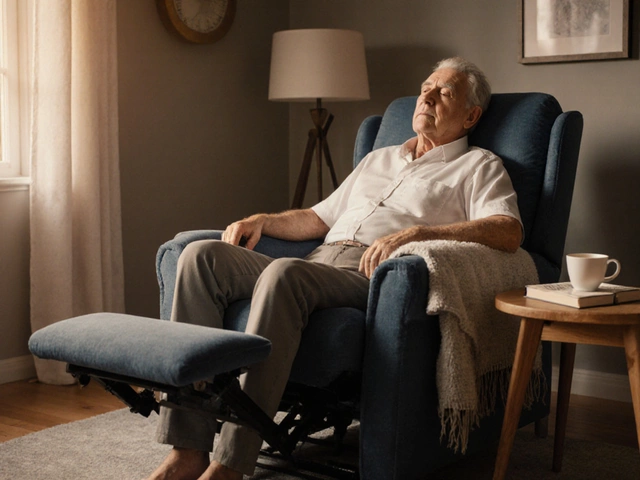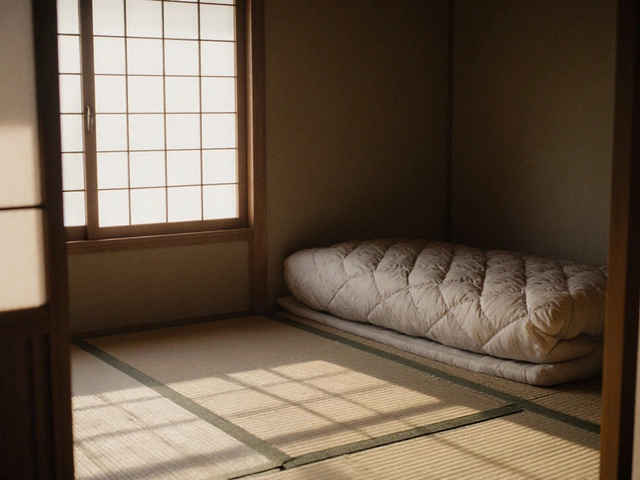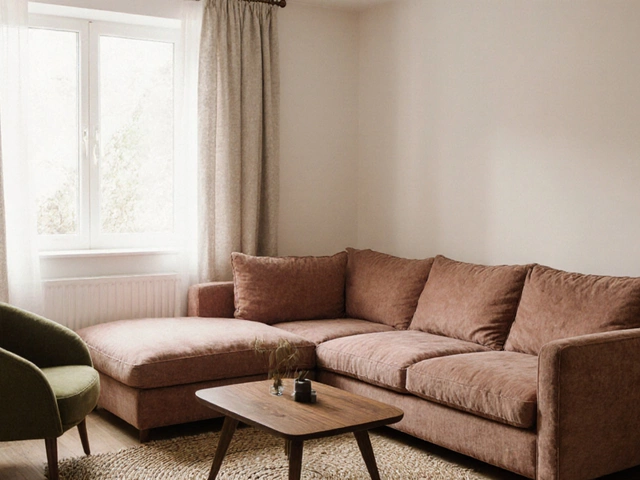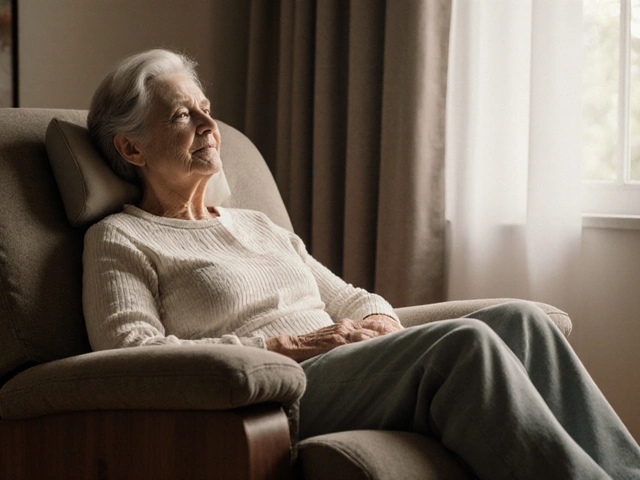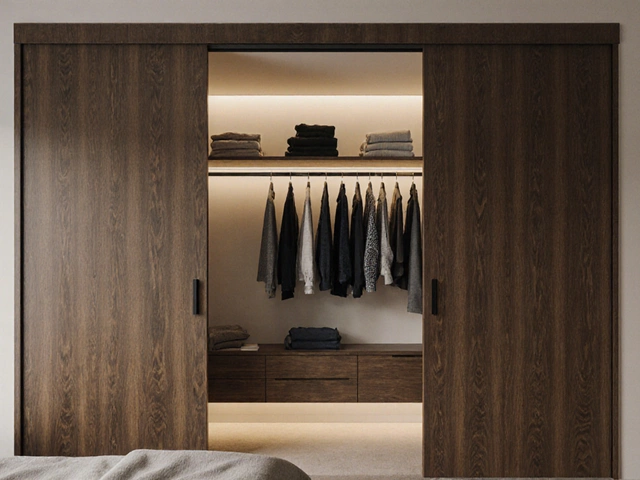Furniture Storage Cost Calculator
Estimated Monthly Cost
$0.00
When life forces you to move, renovate, or simply declutter, the big question pops up: can you just throw your couch, table, and beloved armchair into a storage unit and forget about them? The short answer is yes, but only if you treat the process like a mini‑project instead of a after‑thought. Below you’ll learn exactly how to pick the right place, protect each piece, keep costs in check, and avoid the common headaches that turn a tidy solution into a costly nightmare.
Key Takeaways
- Furniture can be stored safely, but you need the right type of unit and proper preparation.
- Three main options exist: standard self‑storage, climate‑controlled units, and portable containers.
- Use sturdy packing materials, disassemble when possible, and wrap items to guard against moisture and scratches.
- Compare monthly rates, insurance coverage, and access hours before signing a contract.
- A simple checklist can keep you from forgetting crucial steps like labeling boxes or securing doors.
Understanding Furniture storage is the practice of keeping household furnishings in a secure, off‑site location for a defined period
Most people assume storage is just a big garage‑like space where you can toss items. In reality, reputable facilities offer security cameras, gated access, and climate controls that protect against humidity, extreme heat, and pests. Legally, you’re free to store anything you own, provided the items don’t violate local hazardous‑material laws (think chemicals or flammable furniture). The key is matching your furniture’s needs to the right environment.
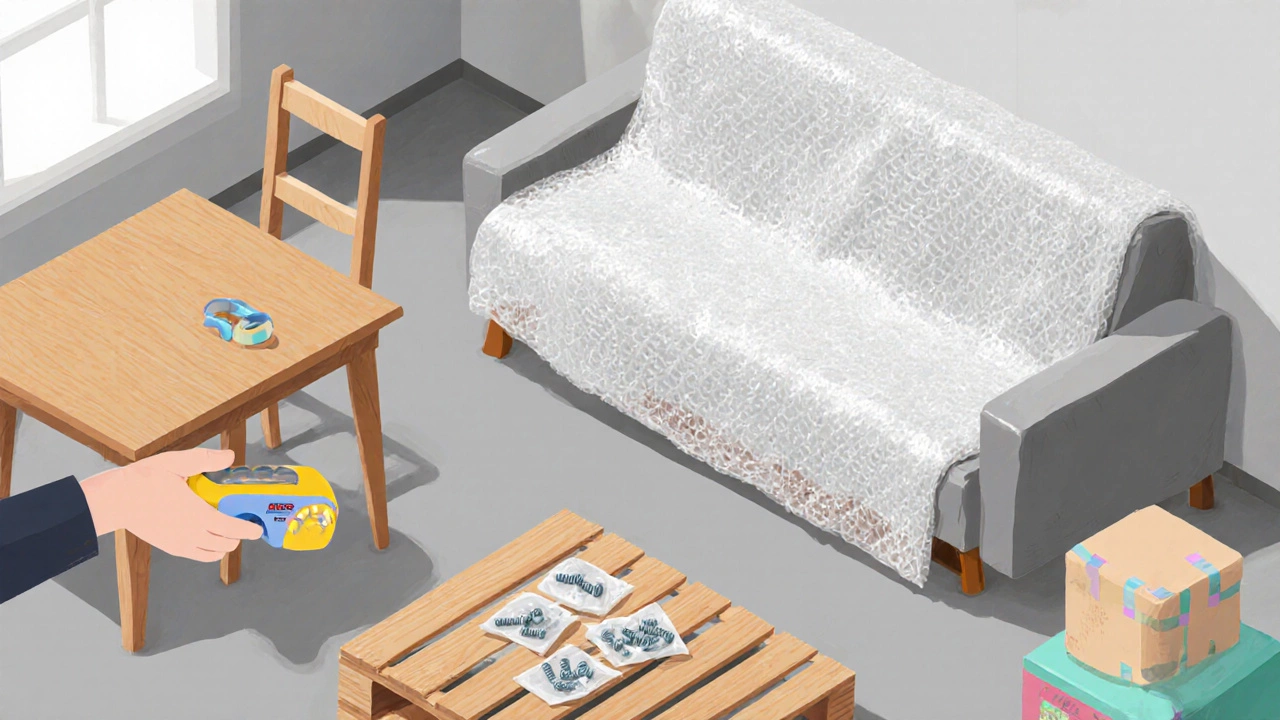
Types of Storage Options
Not all storage units are created equal. Below is a quick comparison of the three most common choices.
| Option | Climate control | Size flexibility | Typical price (USD/month) | Best for |
|---|---|---|---|---|
| Self‑storage unit | No | Fixed dimensions (e.g., 5×5, 10×10, 10×20) | $60‑$150 | Short‑term storage of sturdy items like metal frames or finished sofas. |
| Climate‑controlled storage | Yes (temperature 55‑85°F, humidity 30‑50%) | Fixed dimensions, often higher cost | $90‑$200 | Wooden furniture, leather upholstery, antiques that react to moisture. |
| Portable storage container | Varies (some have climate options) | Movable, you can place it on your driveway or have it delivered to a facility. | $120‑$250 (incl. delivery) | Homeowners who need on‑site access during renovations. |
Preparing Your Furniture for Storage
Proper prep is the difference between furniture that looks brand new when you retrieve it and pieces that arrive with dents, water stains, or broken legs. Follow these steps:
- Disassemble when possible. Remove legs from tables, detach heads from beds, and take apart modular sofas. Keep screws and small parts in labeled zip‑lock bags taped to the main piece.
- Packing materials such as bubble wrap, moving blankets, and sturdy cardboard boxes are essential. Wrap each item at least two layers thick; use furniture pads for large pieces.
- Apply a light coat of furniture polish or leather conditioner to protect surfaces from drying out.
- Furniture insurance offers peace of mind. Many storage facilities partner with insurers, but you can also add coverage through your homeowner’s policy.
- Load heavier items first, placing them against the back wall. Keep a small aisle for easy access.
- Avoid stacking dissimilar items directly on top of one another; place a protective sheet between a sofa and a table.
Costs and Choosing a Provider
Price isn’t just the monthly rent. Look at these variables before signing a lease:
- Unit size: Bigger units cost more, but over‑paying for space you won’t use is wasteful.
- Climate control premium: Typically adds $30‑$50 per month.
- Access hours: 24‑hour access facilities may charge a higher rate.
- Security features: Video surveillance and individual gate codes are worth the extra cost.
- Insurance fees: Some companies bundle insurance for $10‑$15 per month.
To compare providers, create a simple spreadsheet with columns for unit size, monthly rate, climate control, insurance, and any hidden fees. The lowest‑price option isn’t always the best-consider location convenience and reputation.
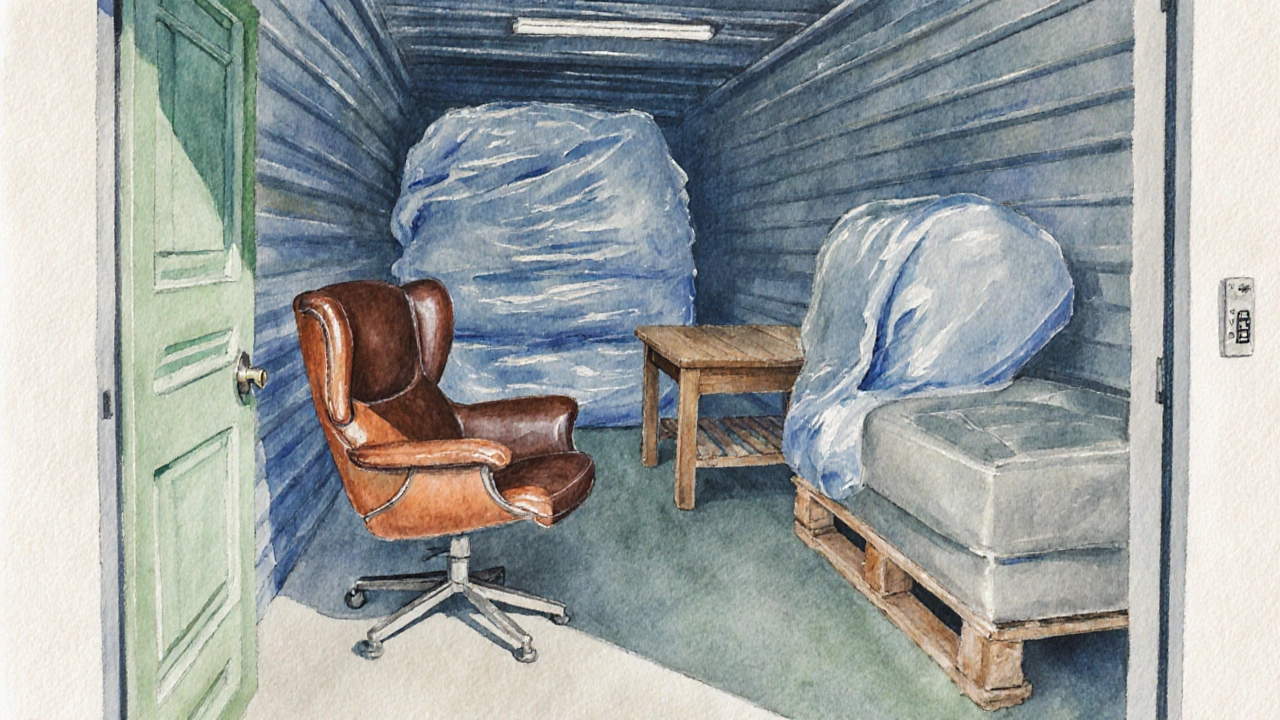
Common Mistakes to Avoid
Even seasoned movers slip up. Keep an eye out for these pitfalls:
- Storing furniture directly on a concrete floor without a pallet. Moisture can seep up and damage legs.
- Leaving plants, magazines, or food inside a sofa. They attract pests.
- Using plastic wrap alone. It traps humidity and leads to mildew.
- Forgetting to write down unit numbers or access codes. You’ll waste time hunting down the right door.
- Skipping a walk‑through with the facility manager to note any pre‑existing damage.
Step‑by‑Step Storage Checklist
- Assess which pieces need storage and decide whether they can be sold, donated, or discarded.
- Measure each item and note dimensions; compare with unit sizes.
- Choose a storage type (self‑storage, climate‑controlled, portable container) based on material sensitivity.
- Contact at least three providers for quotes; request details on insurance and access hours.
- Book the unit and schedule delivery or pick‑up.
- If using a portable container, confirm delivery date and placement permissions.
- Gather packing materials: moving blankets, bubble wrap, zip‑lock bags, packing tape, and pallet boards.
- Disassemble furniture, wrap each piece, and label boxes clearly (e.g., “Living‑Room Sofa - Front”).
- Load the unit, keeping heavy items at the back and fragile items forward.
- Seal the unit door, record the lock combination, and store the code in a secure place.
- Complete an inventory sheet; photograph each item for insurance purposes.
Frequently Asked Questions
Can I store leather furniture in a regular self‑storage unit?
Leather is prone to cracking when exposed to dry air and temperature swings. If you must use a regular unit, wrap the leather in breathable moving blankets and add a humidity‑absorbing desiccant. Better yet, choose a climate‑controlled unit to keep temperature and humidity stable.
Do I need separate insurance for my stored furniture?
Many storage facilities include basic coverage, but it usually caps at $1‑$2 per pound. For high‑value pieces, add a rider through your homeowner’s insurance or purchase the facility’s supplemental coverage. Keep receipts and photos to support any claim.
How long can I keep furniture in storage before it devalues?
Furniture doesn’t lose market value simply by being stored, but poor conditions (moisture, pests) can cause visible damage that lowers resale price. With proper prep and a climate‑controlled unit, you can store items for several years without noticeable wear.
Is it cheaper to rent a larger unit and fill the empty space?
Sometimes a larger unit costs only slightly more than a smaller one, especially if the facility offers bulk‑size discounts. Check the per‑square‑foot rate; if the larger unit is under $1 per ft², it can be a cost‑effective way to avoid multiple small rentals.
Can I store outdoor or garden furniture indoors?
Outdoor furniture is often built to resist weather, but it can still suffer from rust or fading if stored in humid indoor spaces. Clean and dry it thoroughly, wrap with a tarp, and store in a dry unit. If the storage unit isn’t climate‑controlled, add a moisture absorber.



